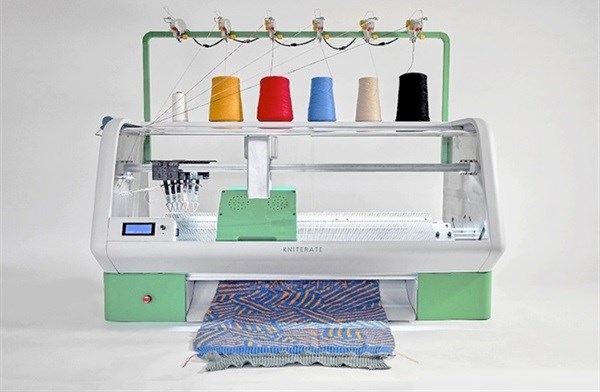Think knitting is just for geriatrics? Think again

It was during his time at design school that Rubio noticed just how much students struggled with older, out-dated knitting machines. Because traditional automated digital knitting machines are extremely costly and take up enormous amounts of space, he decided to make it his mission to come up with another method that was more practical.
“We have developed Kniterate because we want everyone to be able to explore knitting’s potential,” the Kniterate team says on its Kickstarter campaign page. “Until now the only similar tools available were industrial knitting machines, which cost upwards of $50,000, take a lot of space, and require a technician to run. With Kniterate you can make personalised professional knitwear at the click of a button, and repeat and share your favourite designs over and over again.”

Even those with little to no knitting experience should find working with Kniterate a breeze. Featuring computer-controlled needles, Kniterate also features six yarns along with tensioners and sensors for preventing yarn breakage and knotting. The machine employs software that allows the user to design and edit templates as they work – or you can simply upload an image of a garment you’d like to create, and the machine does the rest of the work for you.
Promising to "bring fashion fabrication back to your neighbourhood", the Kniterate also aims to promote the huge potential of knitwear to cut waste in the process of producing garments. Unlike cut-and-sew patterns, knitted products are made to shape, and the excess yarn is reusable, meaning that far less waste is produced. It is the hope of the team behind Kniterate that it will encourage designers to consider these issues and rethink their approach to knitwear.
Source: Design Indaba

Design Indaba inspires and empowers people to create a better future through design and creativity. We are an online publication (www.designindaba.com) with an annual festival and social impact Do Tank.
Go to: www.designindaba.com



















